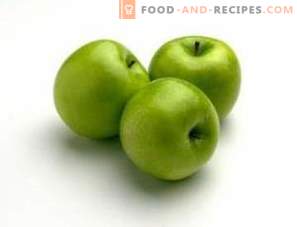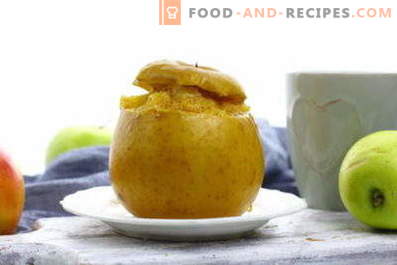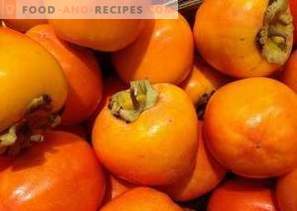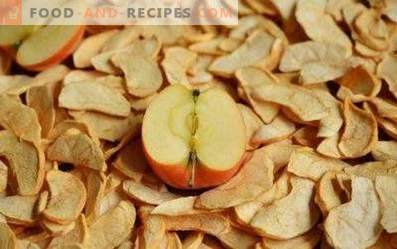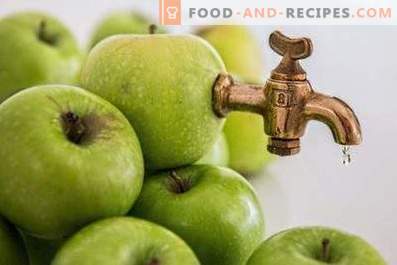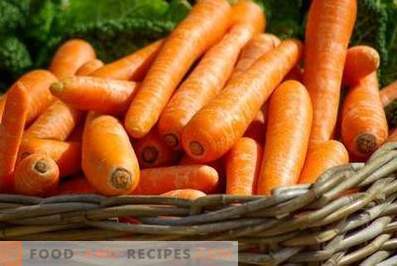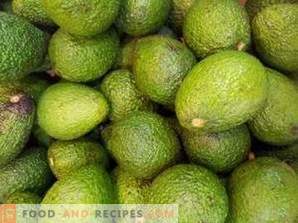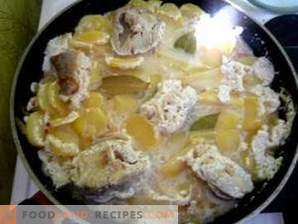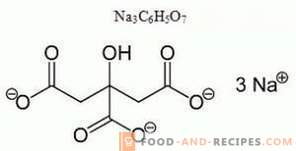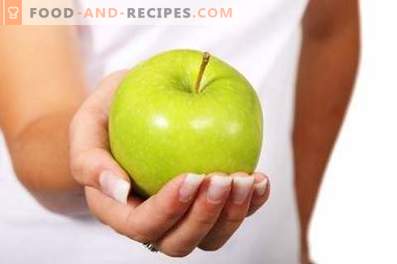
Apple is a popular plant of the genus of deciduous trees and shrubs of the Pink family. Its most common species in Russia is the home apple tree, the fruits of which are consumed fresh or used as raw materials of numerous culinary dishes and drinks.
The historical birthplace of the apple tree is Central Asia. People have always been sensitive to the mysterious fruits of this plant. The fruit of wisdom, which was forbidden to Adam and Eve and became the prerequisite for their expulsion from paradise, is called the forbidden apple. On Olympus, the goddess of contention Eris marked the beginning of the Trojan War, throwing an apple between the gods.
Statistical calculations have shown that half of all fruit trees on the planet are apples. Breeders have studied and created more than 10 thousand varieties of apple trees. The single progenitor of this variety of fruit plants is the wild apple tree. It is widely distributed in Europe, Asia, America. Humanity has definitely long ago paid attention to an amazing tree. But scientists have not yet managed to establish the exact date for the start of apple cultivation. There is no doubt that the age of a homemade apple plant goes back thousands of years. The fruit species is mentioned in the documents of Lucius Junius Columella, who was a famous writer and scientist in ancient Rome. He stated the history of a homemade apple tree, already equal to three millennia (now a total of 5 thousand years can be counted). Presumably the plant began to cultivate in Mesopotamia, where the Sumerian state was formed near the favorable soils of the Tigris and Euphrates rivers. It is known about the popularity of apples in ancient Greece. The philosopher Teofrast, who worked in the IV-III centuries BC. e., in his writings listed several varieties of plants. After Hellas, the Romans learned the fruit crop, and then the apple tree traveled throughout the entire European part of the world. Russia has known the tree since at least the 11th century, when Yaroslav the Wise created a private garden with apple trees and other fruit plants. In addition to homemade apple trees, more than 35 types of culture are known. Apple tree is very popular, apple tree is low and apple tree is Chinese. Trees are often grown as decorations for parks and gardens, which looks particularly impressive in spring. Apple trees are good honey plants, and their strong wood is easy to polish and easy to process, which makes it an excellent raw material for joinery and miniature products.
The apple tree has a spreading crown and reaches a height of 2 to 15 meters. On slightly shortened branches buds grow flowers, and elongated branches are called growth. Some species of wild apple trees protect their branches with spines. Petiolate leaves may be pubescent or without a velvet cover, stipules tend to fall off, although there are exceptions. Pink, scarlet or white petals form a semi-sunshade or flap. Apple blossoms are observed in late spring, while the trees delight passers-by with a strong pleasant aroma. Spherical fruits on the handle usually have a concavity in the upper part of the fruit. Varieties differ in taste and size of apples, so their radius can be from several millimeters to 8 cm. Depending on the timing of fruiting, summer, autumn and winter varieties are distinguished, and the latter are distinguished by the fact that they endure harsh climatic conditions.
In Russia, almost 15 thousand species of apple are known. In the European and Caucasian region, a forest apple tree is common. Asia Minor, the Crimea and Iran are more likely to export an eastern apple tree. The Japanese coast of Eurasia is rich in the berry (Siberian) apple tree, and the Tien Shan plant the apple tree of Nedzwiecki. The Mississippi Basin creates fertile grounds for the development of the Sulard apple tree. The cultivation of apples is widely developed in countries with a temperate climate without sudden changes in temperature. Fertile soil and plenty of moisture are the modest “rider” of an apple plant. World exporters of the “forbidden fruit” are Germany, Italy, China, Japan, USA, Canada, Spain, Chile, New Zealand. Almost 50% of apple turnover consists of Delicious and Golden Delicious varieties, adapted to a wide belt of climatic conditions.
Food and vitamin value of apples
The fruit is approximately 4/5 of the water, if we assume the proportion of the mass of the whole apple. The remaining 20% is extremely rich in fiber, sugars, organic acids and vitamin A, C, PP complexes, group B and several others.
Nutritional value 100 g apples:
- 0, 44 g of proteins
- 0, 43 g of fats
- 9, 82 g of carbohydrates
- 1, 84 g dietary fiber
- 0, 84 g of organic acids
- 86, 33 g of water
- 0, 144 g of unsaturated fatty acids
- 0, 144 g of saturated fatty acids
- 9, 35 g of monosaccharides and disaccharides
- 0, 82 g of starch
- 0, 52 g of ash
Vitamins per 100 g of apples:
- 0, 032 mg of beta-carotene (vitamin A provitamin)
- 5, 35 μg of retinol equivalent (A)
- 10, 5 mg of ascorbic acid (C)
- 0, 034 mg of thiamine (B1)
- 0, 025 mg of riboflavin (B2)
- 0, 073 mg of pantothenic acid (B5)
- 0, 084 mg of pyridoxine (B6)
- 2, 21 μg of folic acid (B9)
- 0, 32 mg of vitamin PP
- 0, 41 mg of niacin equivalent (PP)
- 0, 245 mg of tocopherol (E)
- 0, 32 μg of biotin (H)
- 2, 24 mcg of phylloquinone (K)
Energy value of apples
Low calorie apples are known throughout the world. Nutritionists actively recommend choosing this fruit as the main dish of many types of diets. Apples do not contain fat, and the abundance of carbohydrates in the pulp gives a long feeling of satiety. For people who are watching the figure, it is important to remember the different energetic value of apples after processing. Especially increased calorie apples after drying.
- The caloric value of 100 g of fresh apple is 46 kcal.
- The caloric content of the fruit with a diameter of 5 cm (90 g) - 41, 4 kcal.
- The caloric content of a fetus with a diameter of 6.5 cm (130 g) is 59.8 kcal.
- The caloric content of a fetus with a diameter of 7.5 cm (200 g) is 92 kcal.
- Caloric value of 100 g of baked apples is 65 kcal.
- Caloric content of 100 g of dried apples - 255 kcal.
Macro and trace elements in apples
Apples do not accidentally belong to one of the most popular fruits in Russia. They are used at any age to replenish reserves of iron, as well as potassium, sodium, calcium and iodine. The benefits of apples for teeth, bones, the digestive system and metabolic processes are truly enormous. The fruits are rich even in such rare mineral components as boron, selenium, vanadium and rubidium.
Macroelements per 100 g of apples:
- 16, 044 mg of calcium (Ca)
- 278, 32 mg of potassium (K)
- 9, 044 mg of magnesium (Mg)
- 11, 052 mg of phosphorus (P)
- 26, 012 mg of sodium (Na)
- 2, 035 mg of chlorine (Cl)
- 5, 021 mg of sulfur (S)
Trace elements per 100 g of apples:
- 2, 234 mg of iron (Fe)
- 0, 153 mg of zinc (Zn)
- 2, 03 mcg of iodine (I)
- 110, 05 μg of copper (Cu)
- 0, 0472 mg of manganese (Mn)
- 0, 34 μg of selenium (Se)
- 4, 32 μg of chromium (Cr)
- 8, 02 μg of fluorine (F)
- 6, 03 mcg of molybdenum (Mo)
- 245, 09 μg of boron (B)
- 4, 02 mcg of vanadium (V)
- 1, 03 mcg of cobalt (Co)
- 110, 05 µg of aluminum (Al)
- 17, 03 μg of nickel (Ni)
- 63, 04 µg of rubidium (Rb)
Useful properties of apples
- As mentioned above, apples are an excellent component of even the most strict diets due to their low calorie content.
- Organic acids in the pulp and skin of apples, along with tannins, fight against the putrefactive processes in the intestines, facilitate flatulence and bloating, remove toxins from the body.
- Pectin in apples is an easy and perfectly safe laxative. For the treatment of constipation is useful to use a couple of sour apples in the morning on an empty stomach. Some components of the fruit reduce the growth rate of cancer cells in the liver and intestines. To combat this, it is recommended not to limit the use of apples only to the morning meal, but to add them to dinner. Monthly fasting day with apple mono-diet is very useful for cleansing the body.
- Apple fruits provide the body with a healing effect whether it is healthy or not. Fresh apples contain two times more vitamin A than oranges. The component carries out active prophylaxis of colds and has a beneficial effect on the eyes.
- Extremely rare vitamin G is found in apples in record quantities for fruit. The so-called “appetite stimulating vitamin” prepares the body for the digestive process and promotes human growth. Also, the fruits are very rich in ascorbic acid and vitamins of group B. In non-green apples there is 8 times more iodine than in bananas; orange is inferior to apples thirteenfold handicap. Apples are actively used for the treatment of goiter.
- Fresh apples are especially useful with the skin or after grinding on a coarse grater. Wild fruits are not as sweet as homemade varieties, but they contain ten times more useful components. After eating apples, gastric juice is liberally secreted. This causes appetite and speeds up digestion, so the fruit is very useful for people who do not have time to calmly eat and diligently chew products.
- Ascorbic acid, which is especially abundant in acidic fruits, supports immunity, compacts the walls of blood vessels, removes toxins, and restores strength. Natural antibiotics (phytoncides) from the pulp of apples destroy influenza viruses, treat for rashes on the face, prevent dysentery.
- Potassium and tannins are used to prevent gout and urolithiasis due to the ability to stop the precipitation of uric acid salts. Thus, modest fruits can even cope with kidney stones.
- The soft choleretic effect of the fruit prevents gallbladder disease (for example, cholecystitis and cholelithiasis). Freshly squeezed apple juice is especially effective in the above-mentioned problems: 0, 5-1 glass 20 minutes before meals.
- After apples, the person feels invigorated and refreshed. The low sugar content of the fruit helps relieve blood vessels and improve well-being. Sour apples are always recommended for diabetics. During an apple diet, cholesterol levels are reduced by 30%. Therefore, the “forbidden fruits” are called the strongest cleaners of the blood and lymphatic system. They very quickly cope with the hardening of blood vessels and low blood pressure.
- Elderly people really appreciate the fruits described because their use helps with rheumatism, gout, nervous diseases, eczema and skin problems. This is due to an increase in uric acid levels relative to formic acid. Apples effectively strengthen the skin, eyesight, nails and hair.
- There is an opinion that regular use of apples and fruit juice prevents destructive processes in the brain and strengthens memory.
- Experiments were conducted at the Nottingham Research Institute, the results of which proved: everyday use of 5 apples reduces the risk of respiratory diseases several times. Add asthma prevention to this ability.
- Dentists know that apples perfectly replace the process of brushing your teeth. Of course, you should not rely only on the fruit, as the brush cleans more “professionally”, but one fruit guarantees clean teeth during the day. Apples are able to save tooth enamel from destruction.
- Fresh fruits are recommended for those who suffer from gastritis, colitis, avitaminosis. Baked sweet apples help with chronic constipation and intestinal problems.
- Biologically active components inside the seeds of apples stop the development of cancer. In addition, 5-6 pits of apple provide the daily iodine rate for the body. However, it should be remembered that the seeds contain the toxic glycoside of amygdalin, which splits in the medium of gastric juice with the formation of hydrocyanic acid. To reduce the possible harm from the bones, it is best to fry them and sweeten with sugar. Even with such precautions, you should not use more than 6 apple seeds per day.
Contraindications to eating apples
- It is dangerous to eat apples for ulcers and gastritis due to the high content of organic acids. In this case, it would be better to eat apples after eating, and not on an empty stomach.
- For urolithiasis and colitis, doctors advise eating apples only as mashed potatoes.
- Consuming several apple seeds per day greatly increases the concentration of hydrocyanic acid in the body.
- A decoction of apple leaves sometimes causes diabetes.
